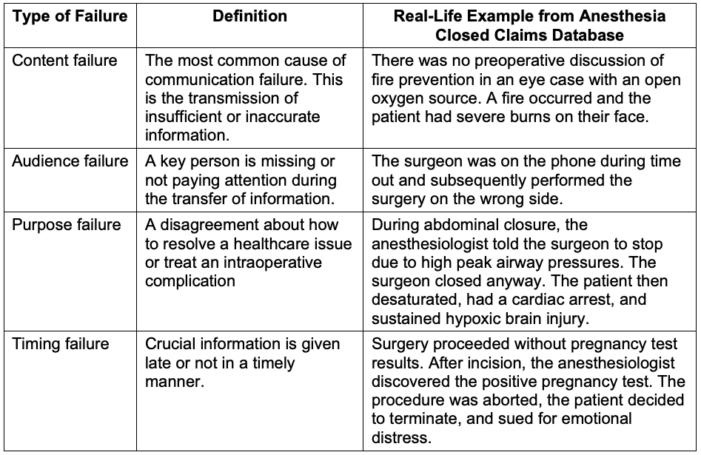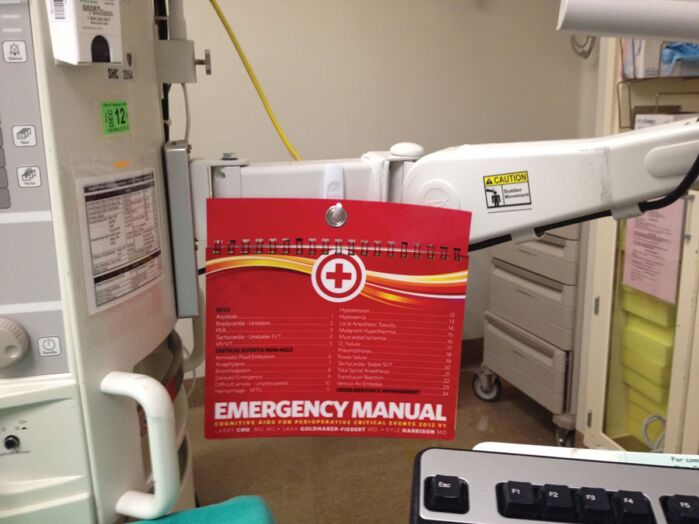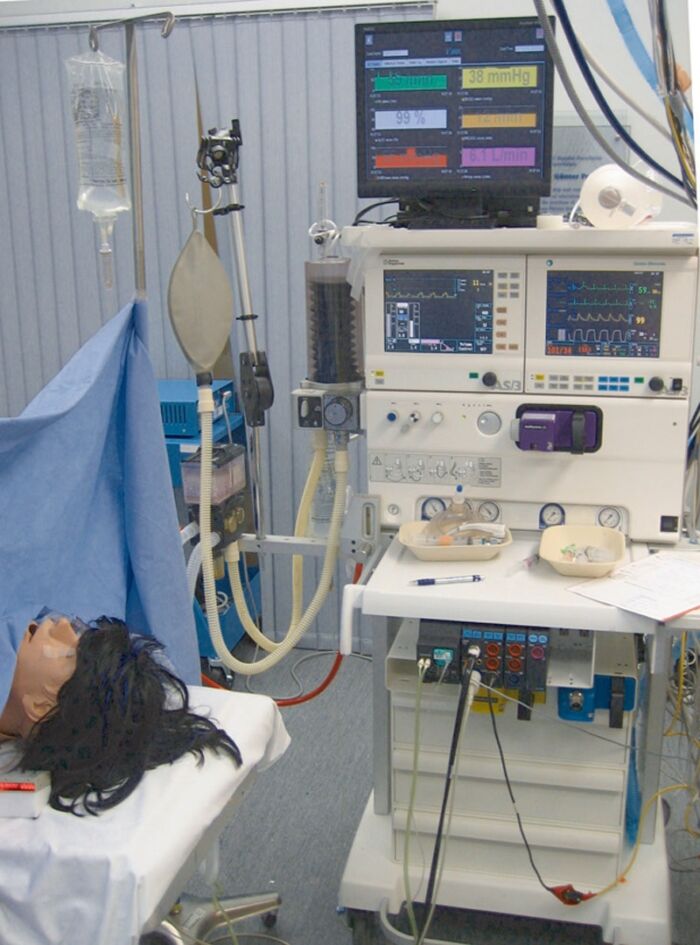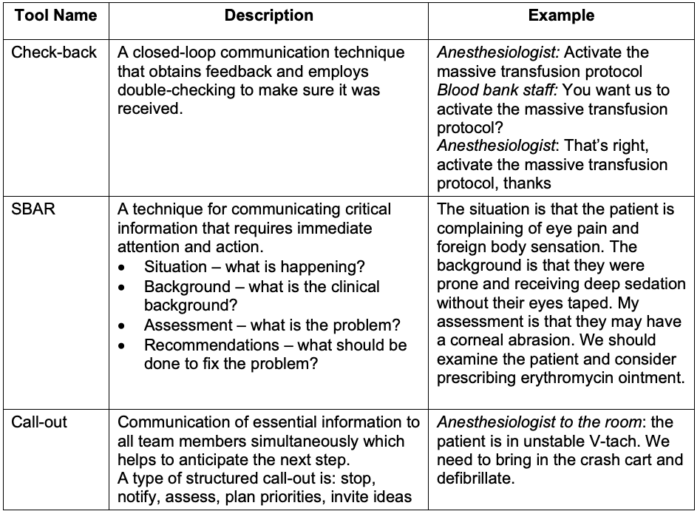Copy link
Teamwork and Communication
Last updated: 10/16/2024
Key Points
- Teamwork and communication in the perioperative setting affect patient outcomes.
- A closed claims database study showed at least one communication lapse contributed to patient injury in 43% of cases.1
- Several methods can improve perioperative communication, such as using perioperative checklists and cognitive aids, standardizing handoffs, and engaging in team communication training.1
Importance
- A review of the anesthesia closed claims database shows at least one communication lapse contributed to patient injury in 43% of cases.1
- Definitions of types of communication failures are presented in Table 1.

Table 1. Types of communication failures1
Elements of Effective Communication
- Methods to improve perioperative communication include:
- Using perioperative checklists and cognitive aids (Figure 1)
- Engaging in team communication training
- Standardizing handoffs1

Figure 1. A standardized location of an emergency manual with checklists on the anesthesia machine. Used with permission from Goldhaber-Fiebert SN, Howard SK. Implementing emergency manuals: Can cognitive aids help translate best practices for patient care during acute events? Anesth Analg. 2013;117(5):1149-61.
-
- Types of team communication training include:
- Anesthesia crisis resource management – a simulator-based curriculum developed using principles from courses used in the aviation industry2 (Figure 2).

Figure 2. A high-fidelity patient mannequin and simulated operating room similar to those used during anesthesia crisis resource management training. Used with permission from Görges M et al. An evaluation of an expert system for detecting critical events during anesthesia in a human patient simulator: a prospective randomized controlled study. Anesth Analg. 2013;117(2):380-91.
-
- Team STEPPS – an evidence-based framework for healthcare team performance3 (Table 2).

Table 2. Selected Team STEPPS communication tools3
Communication During Adverse Events
- Conflict may arise during adverse events. Techniques for managing perioperative conflict include:
- Acknowledge and manage your emotions
- Manage emotions before reacting
- One technique is to “go to the balcony.” This technique involves distancing yourself from your emotions to be more objective.
- Another technique is the “use of the prefrontal cortex,” in which logical thinking is preferred over emotional reactivity.
- Active listening
- This involves understanding not only the other party’s content but also their emotions.
- Be curious about the other party’s perspective. Pay attention to both verbal and nonverbal cues.
- Align interests
- This involves focusing on interests rather than positions and finding commonalities based on interests.4
- Debriefing after a complication has many benefits, including:
- providing feedback and experiential learning;
- identifying systems issues for improvement; and
- mitigating the impact of the event on providers.5,6
- Failure to debrief after critical events has been associated with communication failures (Table 3).
- Acknowledge and manage your emotions

Table 3. Examples of structured and validated debriefing tools5,6
References
- Douglas RN, Stephens LS, Posner KL, et al. Communication failures contributing to patient injury in anaesthesia malpractice claims☆. Br J Anaesth. 2021;127(3):470-8. PubMed
- Gaba DM. Crisis resource management and teamwork training in anaesthesia. Br J Anaesth. 2010;105(1):3-6. PubMed
- TeamSTEPPS 2.0. Content last reviewed May 2024. Agency for Healthcare Research and Quality, Rockville, MD. Accessed October 16, 2024. Link
- Sinskey JL, Chang JM, Shibata GS, et al. Applying conflict management strategies to the pediatric operating room. Anesth Analg. 2019;129(4):1109-17. PubMed
- Arriaga AF, Sweeney RE, Clapp JT, et al. Failure to Debrief after Critical Events in Anesthesia Is Associated with Failures in Communication during the Event. Anesthesiology. 2019;130(6):1039-48. PubMed
- Arriaga AF, Szyld D, Pian-Smith MCM. Real-time debriefing after critical events: Exploring the gap between principle and reality. Anesthesiol Clin. 2020;38(4):801-20. PubMed
Copyright Information

This work is licensed under a Creative Commons Attribution-NonCommercial-NoDerivatives 4.0 International License.